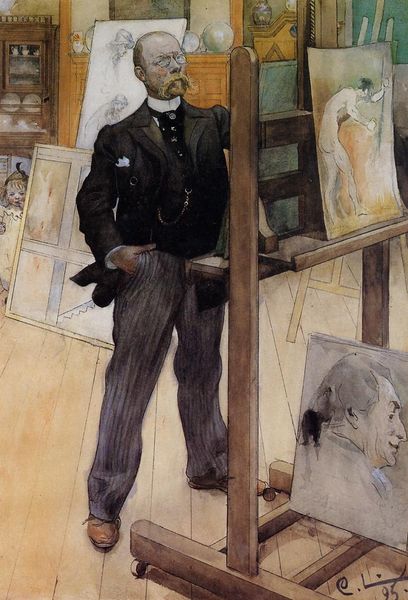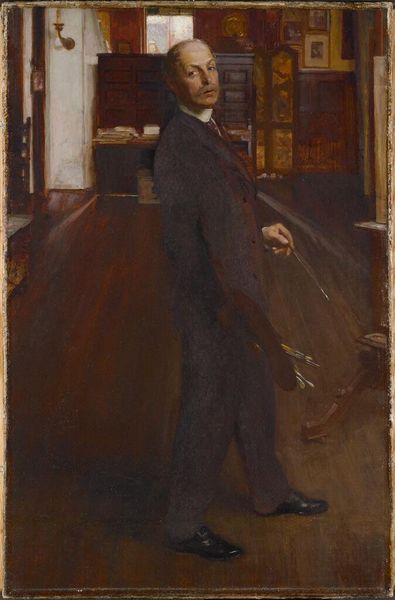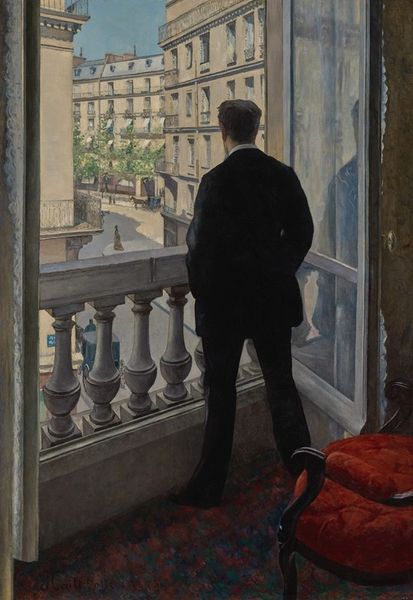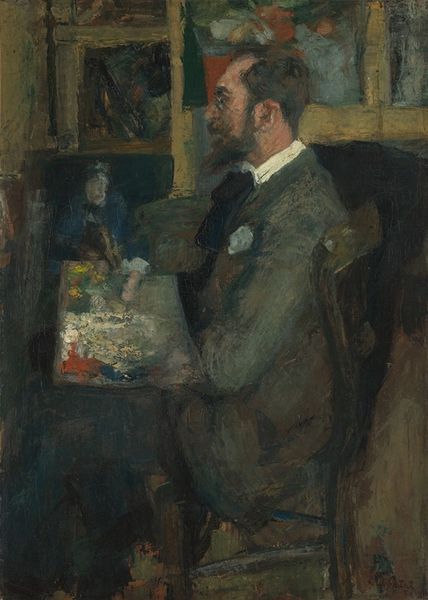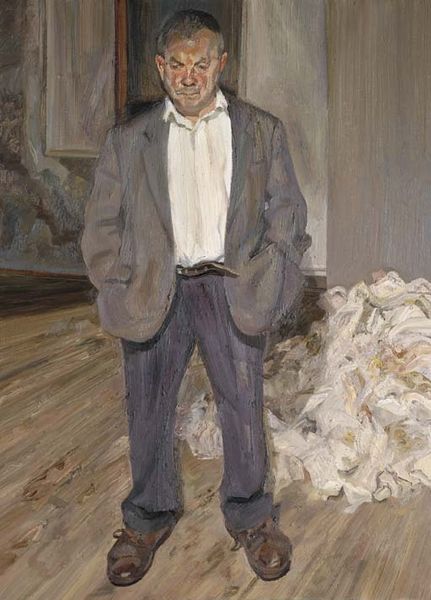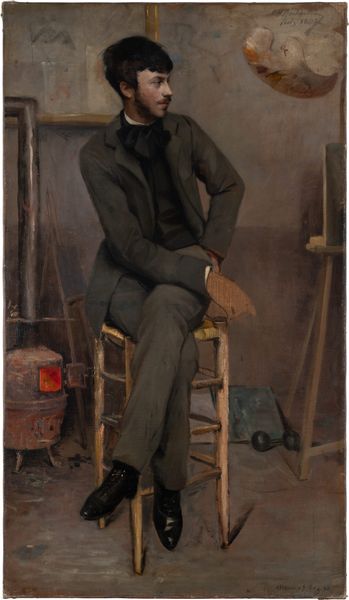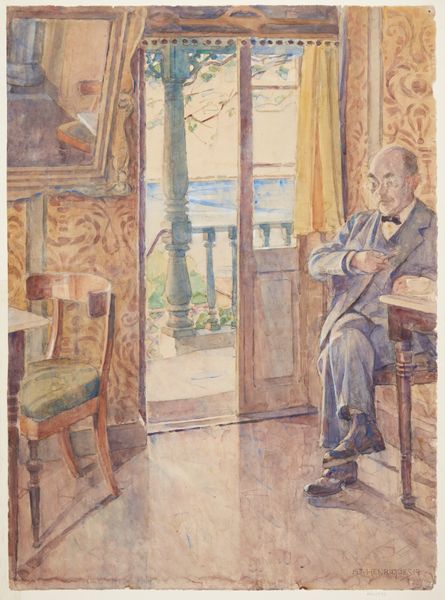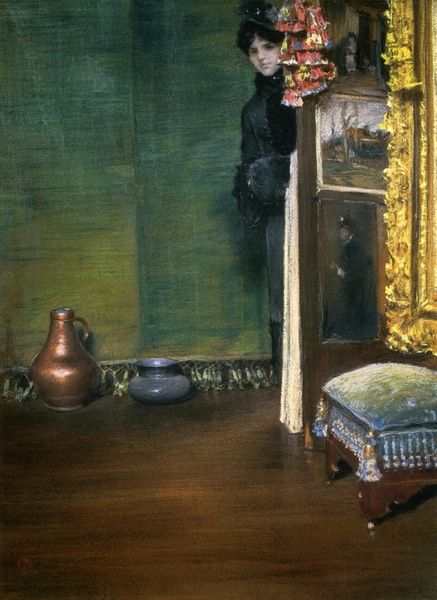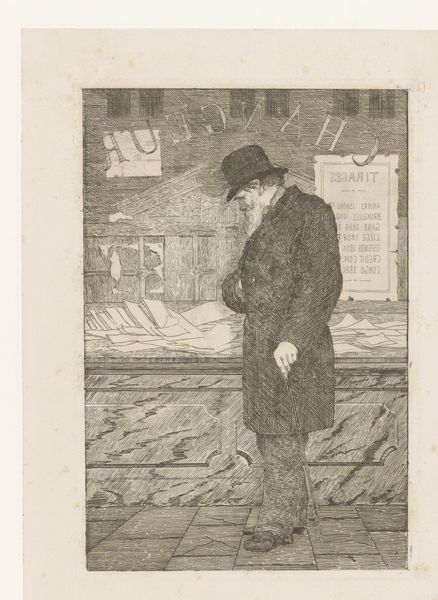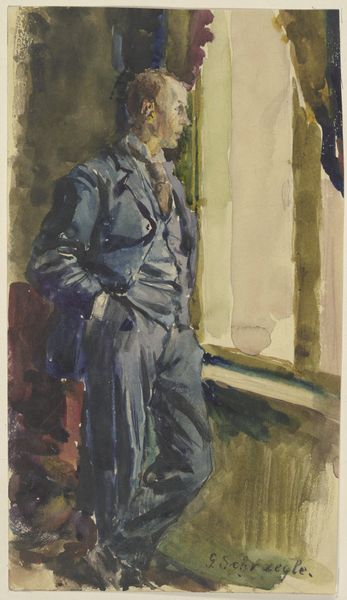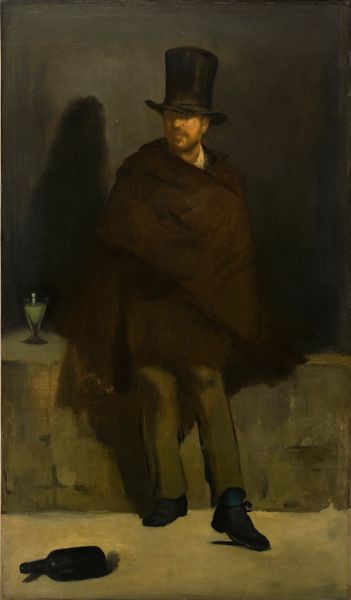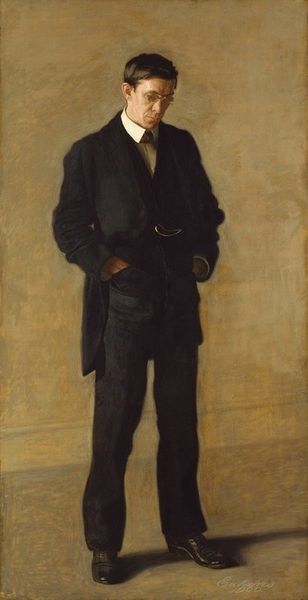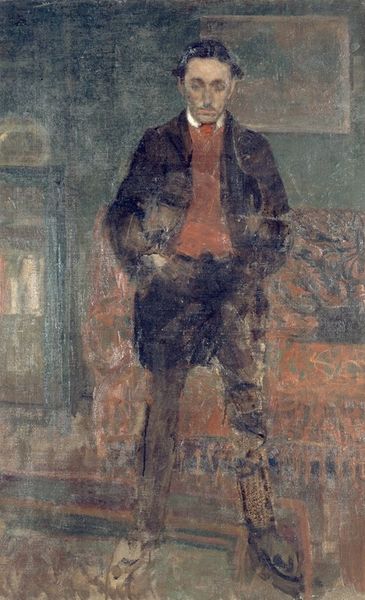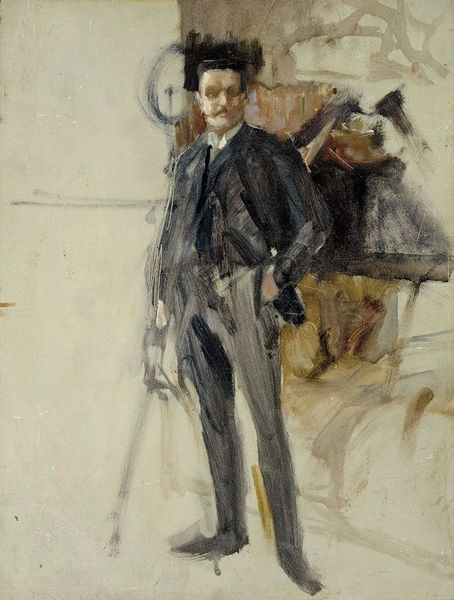
Copyright: Public domain
Editor: Here we have William Orpen's "Self-portrait" from 1910, rendered in oil paint. The reflection is striking – it gives off a sense of calculated chaos and the figure, Orpen, seems self-aware, almost performative. What strikes you most when you look at this? Curator: It’s interesting that you use the word "performative." Given that this was created in 1910, a period of immense social change and artistic experimentation, I am curious as to whether he is constructing a particular persona for the viewer? What’s with all of the letters, art supplies, and a tiled floor and a bowler hat? What image of himself is Orpen trying to project and for whom? Editor: I see your point about the constructed persona. The bowler hat and attire suggest a certain level of societal integration, even conformity, yet he’s surrounded by the supposed tools of an artist, so is he signaling a challenge to bourgeois norms? Curator: Exactly. The setting seems crucial. The inclusion of those props, carefully positioned within the composition, points to the performance of artistic identity during a period of social upheaval and rapid industrialization. This performative nature can be seen to subvert some aspects of the art establishment as Orpen, in a way, is trying to shape how we receive the image itself. How do you view the impact of art exhibitions in constructing social meaning around the turn of the 20th century? Editor: That’s a fascinating connection. So, what might have been expected or promoted by a typical portrait at that time? Curator: The conventions of the time valued idealized and flattering representations of wealthy patrons, often reinforcing social hierarchies and notions of refinement. What strikes me most, though, is the deliberate subversion of these conventions. How it presents a more self-aware, arguably messy and complex self, speaks volumes about shifting notions of identity and the artist's role in society. Editor: That makes me appreciate the layers of meaning packed into this image. I will now consider how the painting may well engage a very social meaning by subverting the social mores expected within society and in the arts itself. Curator: Yes! This painting offers insight into not only Orpen’s identity, but it highlights broader cultural shifts regarding how artists are using art for social commentary during a transitional moment.
Comments
No comments
Be the first to comment and join the conversation on the ultimate creative platform.
